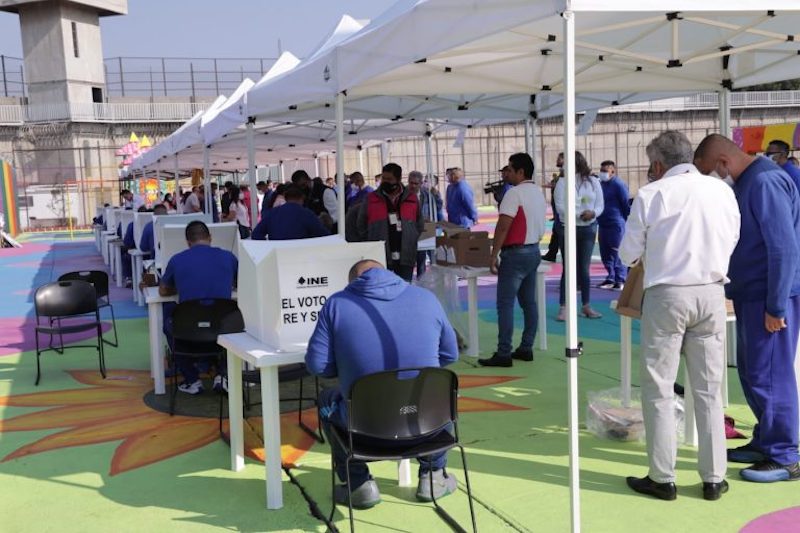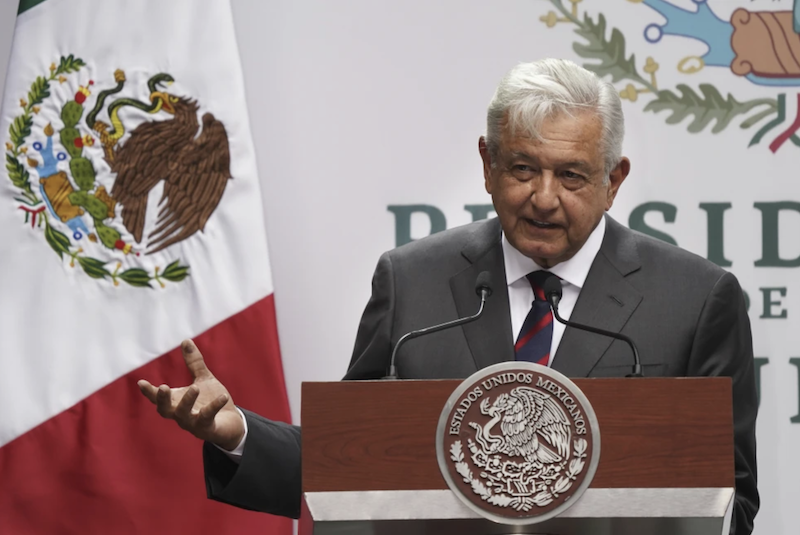8/20/2018 (written by Quinn Skerlos)- Earlier this summer, on May 29th, the body of Hector Gonzalez Antonio was found on a dirt road in Ciudad Victoria, Tamaulipas. According to authorities, Gonzalez Antonio’s corpse showed signs of being beaten, likely with rocks. The journalist, worked for Grupo Imagen’s TV and newspaper services, and covered a crime beat. On June 30th, Mexican journalist, Jose Guadalupe Chan Dzib was murdered in Quintana Roo, one of Mexico’s historically least violent states. Even more recently, journalist and founder of Playa News, Ruben Pat was murdered on July 24th also in Quintana Roo, bringing the journalist death toll for 2018 to at least 7. He had previously reported being threatened by local police. A relevant report on violence against journalists by the Congressional Research Service highlights the occupational hazards that Mexican journalists like Gonzalez Antonio, Chan Dzib, and Pat experience and the counter-measures implemented to protect their line of work.
Congressional Research Service Report
On May 27, 2018, the Congressional Research Service (CRS, Library of Congress), a non-partisan research firm that provides policy analysis for the U.S. House and Senate, published a report on press freedom, or lack thereof, in Mexico. The author, Clare Ribando Seelke, is a Latin America specialist and well-published author, particularly on topics of human trafficking in Latin America. This recent report, titled “Violence Against Journalists in Mexico: in Brief” investigates the following; the status of press freedom in Mexico, violent crimes against journalists, Mexico’s efforts to address said violence, and finally, the role of the U.S. government in encouraging Mexican rule of law.

The report leads off with a comparison of press freedom within Latin America, and a summary of crimes against journalists. Although press freedom has continued to decline across Latin America, the report argues that Mexico remains one of the most dangerous places in the world to be a journalist. The report highlights statistics from both Justice in Mexico and the Committee to Protect Journalists to show the hazards faced by journalists (CPJ). For example, in the last decade, Justice in Mexico reports that 140 journalists and media professionals were killed in Mexico. On that note, the report identifies that Mexico sports one of the highest murder rates for journalists in the world and is in the top 10 deadliest countries worldwide for media workers. In 2017 alone, Article 19, an international human rights organization, found that there were 500 “aggressions,” or violent actions against journalists not limited to just kidnapping and murder (Article 19). This number is significantly higher than the year before and Mexican journalists continue to face economic and psychological pressures, leading some to seek asylum abroad.
The report then delves into some of the efforts taken by Mexican officials to counter and reduce violence against journalists. According to the CRS report, the Federal Protection Mechanism, established by the Mexican government in 2012, has provided protection for 380 journalists by means of armed guards, panic buttons, and other resources. Another governmental initiative, the Special Unit for Crimes Against Journalists and Violations of Freedom of Expression (Fiscalía Especial para la Atención de Delitos Cometidos contra la Libertad de Expresión, or FEADLE) was established as its own office under the Attorney General in 2010. FEADLE has the authority to investigate any case, even if it is already under review by state authorities. However, the CRS report also underlines the shortcomings of governmental protections in Mexico. For example, the U.N. and other human rights authorities maintained that the Federal Protection mechanism is “surprisingly limited,” as studies have shown that some panic buttons lacked functionality and were structurally ineffective (OHCHR). These buttons reach only local police, who potentially lack the resources or the will to help, or are in the pocket of organized crime (OHCHR). Only 12.6 percent of cases investigated by FEADLE ended in convictions against perpetrators from 2010 until 2017, leading the Inter-American Commission for Human Rights to state that FEADLE “still has not made any impact in combatting impunity (OHCHR).” The CRS highlighted a CPJ report that claims an 86% impunity rate for journalists killed as a result of their work (CPJ).
In its conclusion, the report underscores the U.S. State Department-sponsored Merida Initiative that has given 2.9 billion dollars in support of rule of law in Mexico. However, as the report points out, U.S. congressional officials have discussed concerns about human rights conditions in Mexico, including the Mexican government’s ineffective protection of journalists and human rights advocates. Governmental organizations receiving U.S. aid continue to be monitored, and in 2014 and 2016 Mexico was refused certain assets because they had not made sufficient progress on human rights issues. While there have been policy obstacles for the partnership, the partnership remains, with aid specifically directed towards strengthening rule of law, protecting human rights, and reducing impunity rates.
Press Freedom Currently, and in Relation to the World

According to Justice in Mexico’s “2018 Drug Violence Report,” 133 Mexican journalists have been killed from 2006 to 2016. The report highlights that journalists in Mexico are three times more likely to be killed than the general public. Last year alone, 14 media workers were killed, including the prominent corruption and organized crime reporters Miroslava Breach and Javier Valdez. La Jornada, one of Mexico City’s daily newspapers, reported that Mexican journalists do not feel confident in government institutions to protect them, and that more than 60% of journalists surveyed have reported aggressions pointed towards them regardless of public protections (La Jornada).
Even with government measures, such as FEADLE and the federal protection mechanism, Reporters Without Borders listed Mexico as 147th in world press freedom for 2018, a worse ranking than South Sudan and Afghanistan (RSF). In a statement made by the CPJ, impunity “has made the country one of the most dangerous places in the world for reporters” and the 2000 acts of violence against journalists in Mexico recorded by the CPJ since 2012 seem to echo this sentiment (CPJ). Journalism across Mexico is being affected by violence and impunity, and while the government appears to have taken steps to help, there is room for improvement in order to fully protect press freedom and journalists in Mexico.
Works Cited
Aguilar, Roberto. “Condenan asesinato del periodista Héctor González Antonio.” El Universal. May 30, 2018. http://www.eluniversal.com.mx/nacion/seguridad/condenan-asesinato-del-periodista-hector-gonzalez-antonio
Calderon, Laura. Shirk, David. Rodriguez Feirerra, Octavio. “Drug Violence in Mexico: Data and Analysis Through 2017.” Justice in Mexico. April 2018. https://justiceinmexico.org/wp-content/uploads/2018/04/180411_DrugViolenceinMexico.pdf
Linthicum, Kate. “Anther Journalist has been killed in Mexico- the sixth this year.” Los Angeles Times. May 29, 2018. http://www.latimes.com/world/mexico-americas/la-fg-mexico-journalist-killed-20180529-story.html
Muedano, Marcos. “Feadle inicia investigacion por asesinato de Hector Gonzalez Antonio.” Excelsior. May 30, 2018. https://www.excelsior.com.mx/nacional/feadle-inicia-investigacion-por-asesinato-de-hector-gonzalez-antonio/1242150
Olivares Alonso, Emir. “Periodistas desconfian de instituciones,” La Jornada, June 27, 2017. http://www.jornada.com.mx/2017/06/27/economia/003n2pol
“Mexicn Journalist Hector Gonzalez Antonio Beaten to Death.” Al Jazeera, May 30, 2018. https://www.aljazeera.com/news/2018/05/mexican-journalist-hector-gonzalez-antonio-beaten-death-180530053135595.html
“Mexican Journalist Found Dead in Tamaulipas State.” Committee to Protect Journalists. May 30, 2018. https://cpj.org/2018/05/mexican-journalist-found-dead-in-tamaulipas-state.php
“2018 World Press Freedom Index.” Reporters Without Borders. 2018. https://rsf.org/en/ranking
“Libertades en Resistencia: Informe 2016 de Article 19.” Articulo 19. April 2017. https://articulo19.org/informe2016/.
“Preliminary Observations by the UN Special Rapporteur on freedom of expression and the Special Rapporteur on freedom of expression of the IACHR following their joint visit to Mexico.” United Nations Human Rights Office of the High Commissioner. December 4, 2017. https://www.ohchr.org/EN/NewsEvents/Pages/DisplayNews.aspx?NewsID=22484
“Journalist murdered in southern Mexico before Sunday’s elections.” Reuters. June 30, 2018. https://www.reuters.com/article/us-mexico-violence/journalist-murdered-in-southern-mexico-before-sundays-elections-idUSKBN1JQ0ZT
“Journalist gunned down in Mexican resort town.” Reuters. July 24, 2018. https://www.reuters.com/article/us-mexico-violence/journalist-gunned-down-in-mexican-resort-town-idUSKBN1KE2OL




